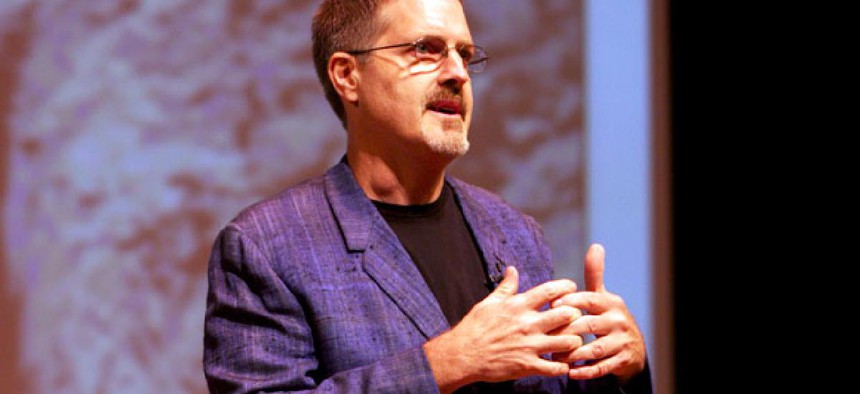Empowering Innovation One Great Idea at a Time

Richard Boly is director of the Office of eDiplomacy at the State Department. Flickr user personaldemocracy
Richard Boly is on a mission to identify future technology leaders at the State Department.
When a State Department employee assigned to the U.S. Consulate in Guangzhou, China, worried that pollution there might harm his children if they played outside, he did what any innovative, over-achieving tech-savvy parent might do -- he created a software application to record air quality as measured by Environmental Protection Agency monitors installed at the facility.
When the app, which was intended for U.S. personnel, proved especially popular among Chinese environmentalists and equally unpopular among Chinese government officials, staff at the U.S. Embassy in Beijing took notice. Why not link the EPA data being collected at all U.S. locations in China into a central system and publish the information electronically? Embassy personnel took their proposal to the IT Innovation Fund at State’s Office of eDiplomacy.
“They came in and said, ‘This has really ticked off the Chinese Government,’ said Richard Boly, director of the eDiplomacy office. But quietly, China had also dramatically increased funding for its leading environmental institution. “This tiny investment has leveraged a huge policy change and resource reallocation on the part of the Chinese government,” Boly said. “It’s open government incarnate.”
It’s exactly the kind of investment the IT Innovation Fund aspires to make: It doesn’t require a lot of money by most IT acquisition standards; it’s relatively easy to implement; and it has the potential to change the way organizations and people operate.
The idea behind the fund was simple, Boly said: “Innovation often happens the further you are from the mothership, yet the further you are from the mothership the more likely you are to be starved for resources.”
Especially attractive to fund managers are investments that have the potential to be replicated in scale.
“We didn’t want to be prescriptive or seed [the program] with problems people should fix,” Boly said. “People tend to be risk averse. They want to see examples, but we didn’t want to restrict their thinking.” The only requirement is that projects must be technology focused and, in general, internally focused on improving operations at the department.
David Zweigel, senior technology advisor in the eDiplomacy office, said the fund has evolved over time as managers have honed the program since its inception in 2010. “We’re about to roll out a new version of our website. We’re refining it and moving to more of a Kickstarter-type environment,” minus the crowdfunding, he said. “We want people to post updates whenever they have them. We’re asking new people submitting their programs to do a two to five-minute video explaining it so they can get other people energized about it.”
A panel of IT managers decides which projects to support. Requests for anything above $25,000 must be accompanied by an acquisition strategy as well. “We want to start including more project management. Some of the folks who are working on these projects have never managed a project before,” Zweigel said.
He cites a project in Hong Kong that embodies the spirit of the fund. People involved in maintenance at the embassy there wanted to find a way to measure the cost of electricity U.S. personnel were using in government housing. “They found this little device that fits on the meter and can relay the information via the Internet to a central computer that shows them each house and how much water they’re using, when they’re using the electricity. It was like a $79 package for each module.” Once people started seeing -- along with their neighbors -- how much energy they were consuming, suddenly consumption decreased precipitously.
“It created positive social pressure,” Boly said. “You don’t want to be the outlier energy hog.” In the end, a $35,000 investment resulted in savings of over $100,000 in energy costs within a year.
The IT Innovation Fund has another goal beyond spurring technology innovation far from the flagpole, Boly said. “We wanted to identify those people who were in the field who were innovative, who would come up with ideas and have both the tenacity and the gumption to go to their supervisors and say ‘I want to go for this idea, I have this idea and I want the added time to go for it.’ It was a way to help surface innovators and future leaders in the IT field at the State Department,” he said.
Help Nextgov identify innovators across government by nominating outstanding peers for a Nextgov Bold Award.






